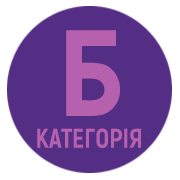FORMATION OF HISTORICAL IDEAS IN CHILDREN WITH INTELLECTUAL DISABILITIES
DOI:
https://doi.org/10.32782/inclusion/2024.3.7Keywords:
formation of historical ideas, school history course, children with intellectual disabilities, children with special educational needs, special education, inclusive educationAbstract
The article proposes a classification of historical representations, which are differentiated by the author into quantitative, local (spatial), chronological (temporal), figurative and logical. Textbooks on the history of Ukraine for schoolchildren with intellectual disabilities are analyzed and concrete examples are given on the basis of which the process of forming historical ideas is carried out. Difficulties that must be taken into account by the history teacher when forming historical ideas among schoolchildren with intellectual disabilities are highlighted. The author attributes to such difficulties: a significant reduction or misunderstanding of real distances, difficulties in orientation in geographical directions, misunderstanding of the location of objects relative to each other, perception of objects of different sizes located at different distances equally incorrectly, difficulty in determining cause and effect sounds and others. Didactic methods and methods of formation of historical ideas among schoolchildren of the specified category are described, means of effective formation of ideas about the past in history lessons among children with intellectual disabilities are highlighted. Emphasis is placed on the effectiveness of imagery, video materials, verbal description, excerpts from fiction, adapted historical text sources, problematic questions, expository reading, etc. The importance of recording chronological dates on the board, in a notebook, clearly naming dates, centuries (parts of a century), repeated repetition and updating of previously studied historical material is emphasized. The author emphasized the various potential opportunities of students with intellectual disabilities in working with historical and modern maps, atlases, when performing chronological tasks, writing historical dictations, establishing cause-and-effect relationships, etc. It is recommended that teachers take into account the individual psychophysical and cognitive abilities of students of special institutions of general secondary education when forming their historical ideas.
References
Пометун О. І., Фрейман Г. О. Методика навчання історії в школі. К.: Генеза, 2006. 328 с.
Косенко Ю. М. Історія України: підручник для 8 класу спеціальних закладів загальної середньої освіти (F 70). Чернівці: Букрек, 2017. 304 с.
Косенко Ю. М. Історія України. 7 клас: підручник для спеціальних загальноосвітніх навчальних закладів для розумово відсталих дітей. Чернівці: Букрек, 2016. 280 с.
Роль засобів наочності у розвитку історичного мислення. URL: http://surl.li/gksdh (дата звернення: 12.01.2024).
Плешканівська Г. М., Слюсаренко А. Г. Оповідання з історії України. Підручник для 7 класу допоміжної школи. К.: Богдана, 2000. 222 с.
Косенко Ю. М. Історія України: підручник для 9 класу спеціальних закладів загальної середньої освіти (F 70). Чернівці: Букрек, 2018. 304 с.
Яковенко Г. Г. Методика навчання історії: навчально-методичний посібник. Харків: Видавництво ХНАДУ, 2017. 324 с.
Косенко Ю. М. Особливості формування уявлень про хронологію та історичний час в учнів спеціальної школи. Збірник наукових праць Кам’янець-Подільського державного університету. Серія соціально-педагогічна. Кам’янець-Подільський, 2008. Вип. VIIІ. С. 210–218.
Гіренко Н. А., Гришин Ю. А., Липа В. О. Методика викладання історії в допоміжній школі: методичні рекомендації. Слов’янськ, 2010. 150 с.
Косенко Ю. М. Формування і корекція історико-просторових уявлень у розумово відсталих учнів. Збірник наукових праць Кам’янець-Подільського національного університету. Серія соціально-педагогічна. Кам’янець-Подільський, 2009. Вип. ХІІ. С. 198–201.







